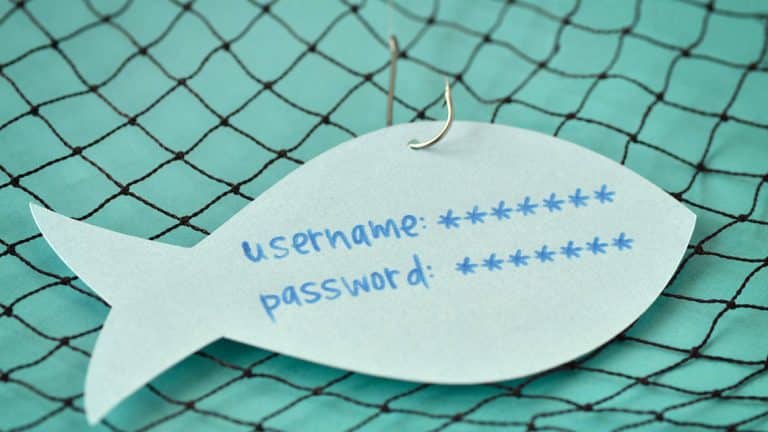Shopping online safely
There are so many conveniences to shopping online, but you also need to be careful about who you’re buying from and the information you’re giving out. The last thing anyone wants is a dud deal, products that never show up, or credit card details in the wrong hands. With a bit of know-how and planning,…

There are so many conveniences to shopping online, but you also need to be careful about who you’re buying from and the information you’re giving out. The last thing anyone wants is a dud deal, products that never show up, or credit card details in the wrong hands. With a bit of know-how and planning, you can be smarter and safer when shopping online.
Get the basics right for safe and secure online shopping
Only use trusted WiFi connections, especially when creating or logging into online accounts and making payments. Be careful using public WiFi and WiFi connections that aren’t secure – someone could see what you’re doing. The best option when shopping is to use your personal WiFi, mobile data or a WiFi network you trust.
When you’re setting up online accounts, make sure you choose a strong password and that you use a different one for every account. You should also use Two-Factor Authentication on every account you can – think of it as an extra layer of security to keep your important information safe.
Spend wisely
Look for the padlock: Look for a padlock symbol in the browser window when you browse, log in, register and check out. Only enter your credit/debit card details on a webpage that begins with ‘https://’. The ‘s’ stands for secure and means your payment information is encrypted. This means that if someone was able to access the information you’ve entered, they wouldn’t be able to make any sense of it. Remember that the ‘https://’ means your information is encrypted, it doesn’t mean that the person or organisation running the website is legitimate.
Check your refund options before you purchase: Large companies will often have information about their refund policy on their website. Credit cards often have additional protections – talk with your bank about the chargeback options on your card. If you’re purchasing from a New Zealand business or private seller, you’ll need a physical address if you ever need to go to the Disputes Tribunal. Services like PayPal and TradeMe have an in-app or in-website disputes process.
How to pay: Buy online using a credit card or a well-respected payment service such as PayPal. Buying with a credit card gives you better protection than a debit card. if something goes wrong, you’ll be able to try to get a chargeback through your bank. A chargeback is where the money paid to the retailer is reversed out of their account and put back into yours.
Use a disposable credit card: You can also shop online using a disposable credit card, such as a Prezzy card. If the disposable credit card details fall into the wrong hands, they’ll only be able to spend what you’ve pre-loaded on the card.
Saving payment details: Some retailers will ask if you’d like to save your payment details for next time. If the website isn’t using a third-party payment system, think carefully about how they might use that information, and how well they’d be able to protect it if someone tried to steal it. The safest option is to only save payment details if the website uses a trusted third-party payment system like PayPal, Apple Pay or Google Wallet.
Check your credit card statements: Always check your credit card statements to make sure there’s no fraudulent charges being made. If you spot something, contact your bank immediately.
Trying somewhere new
Do your research on the company: Is customer support accessible? Check the store location on Google Maps – does it match what you’d expect? Call the phone number – many scam sites will list a phone number but won’t answer their phone. You’ll want to be able to get a hold of the website quickly if something goes wrong.
If you’re messaging a private seller on social media, how old is their profile? Do they have many friends online? Is there enough evidence to back up that they are a legitimate profile?
What do others think? If you haven’t bought from a website before, do a quick online search of the name of the website with the word “scam” or “review” after it e.g. search for “Bill’s Unbelievable Bike Store scam review”. If they’ve ripped off others, there’s a good chance you’ll see warnings from disgruntled customers.
Make sure it all lines up: Check that the URL of the website matches what they’re selling. If Gary’s Great Garage Doors is selling killer-priced Nike shoes, something might be amiss. Why would this happen? Some scammers will claim a domain (website address) from a legitimate company that has accidentally let their ownership lapse or from a legitimate company that has closed down. They want to take advantage of all of the web traffic going to the website and the SEO benefits it may have such as showing higher in search engine results.
Who’s running the show? You can find out who owns the domain, their contact information and how long the website has been operating. If the website was recently set-up or is hidden behind a private domain registration, be cautious about placing an order. Find domain information using whois.domaintools.com or dnc.org.nz.
Remember, a New Zealand website doesn’t always mean a New Zealand company. You don’t have to be based in New Zealand to use a .nz domain – and a lot of genuine businesses based overseas use a .nz name for their New Zealand customers. However if a company is based overseas, it will be harder to get your money back through avenues like the disputes tribunal.
If something goes wrong?
Follow up on your order: Most genuine sellers will be quick to reply to emails, but a lack of response could indicate there’s trouble.
Talk to your bank: They can talk to you about your refund options and how to protect your financial information. If you paid by credit card, you can apply to your bank for a chargeback. Most banks have a 60-day limit from the time of purchase for you to lodge a chargeback request. If you paid via a third party system such as PayPal, go through their dispute resolution process before attempting to go through the chargeback process with your bank.
Report the seller: If you have purchased something from a fake .nz online store and never received the goods, you can report the website by emailing [email protected]. If you found the seller/business through social media, report their page/profile to the site so that the social media platform can take action.
Apply to the Disputes Tribunal: If you’ve ordered through a New Zealand based seller you can make an application to the Disputes Tribunal. To make an application you need to have the seller’s physical address, which can sometimes be a problem. There is also a fee for applying.
Think about the information you’ve supplied: If you think you’ve dealt with a scam website, and you’re worried about the personal information you’ve provided, you can contact an organisation such as ID Care for help and advice.
Report to Netsafe: We can give you tailored advice and the information you provide us helps us keep track of dodgy dealers and work with Consumers Affairs to educate others about online scams and fraud.
Report a scam to Netsafe
Netsafe can’t open investigations or track scammers, but we can offer advice for people who have lost money in a scam or think they are about to. This includes letting you know the steps you can take depending on the scam you’re in and how to stay safe in future. You can report a scam at www.netsafe.org.nz/report.
More information
For more information and advice on safe and secure online shopping, check out our plain language guide to shopping and selling online.
Keep up to date
Follow us on social media and sign up to our newsletter for Netsafe alerts, news and tips.







